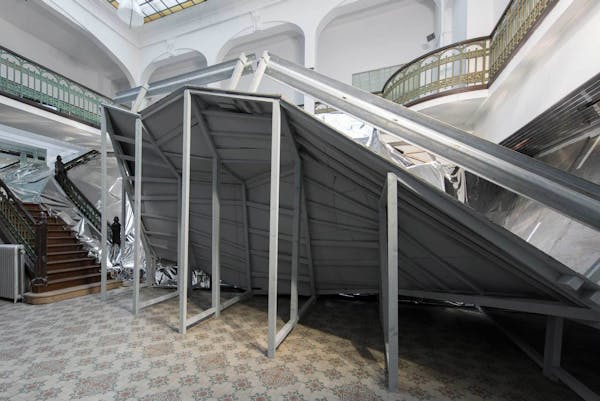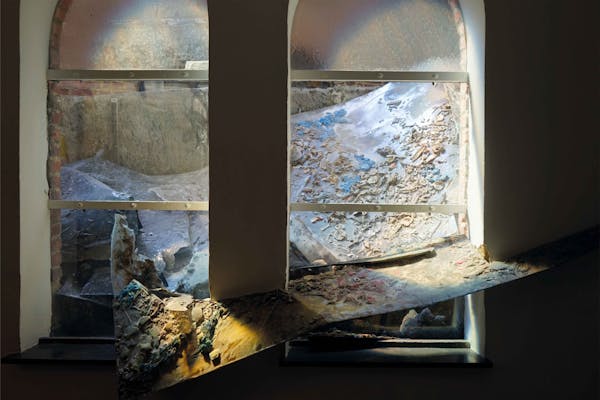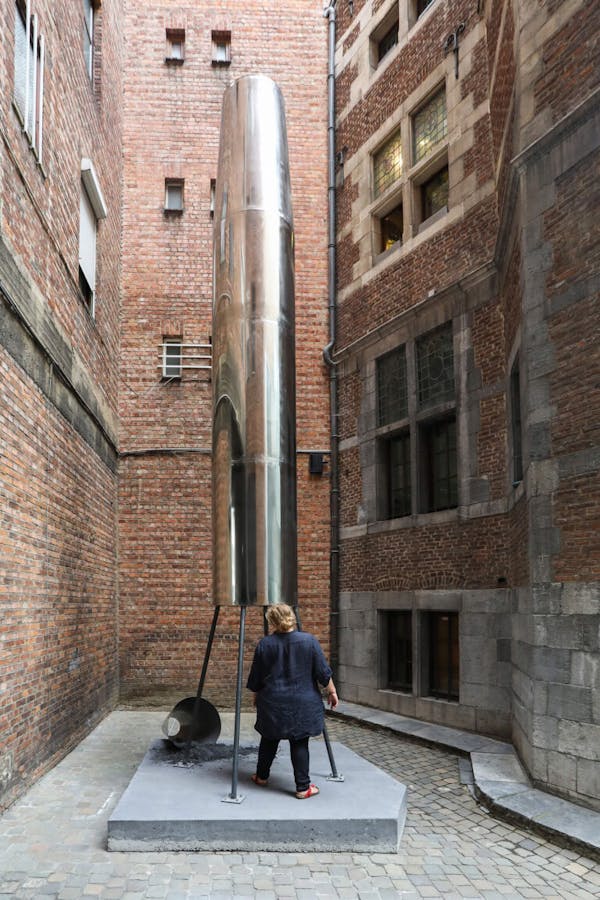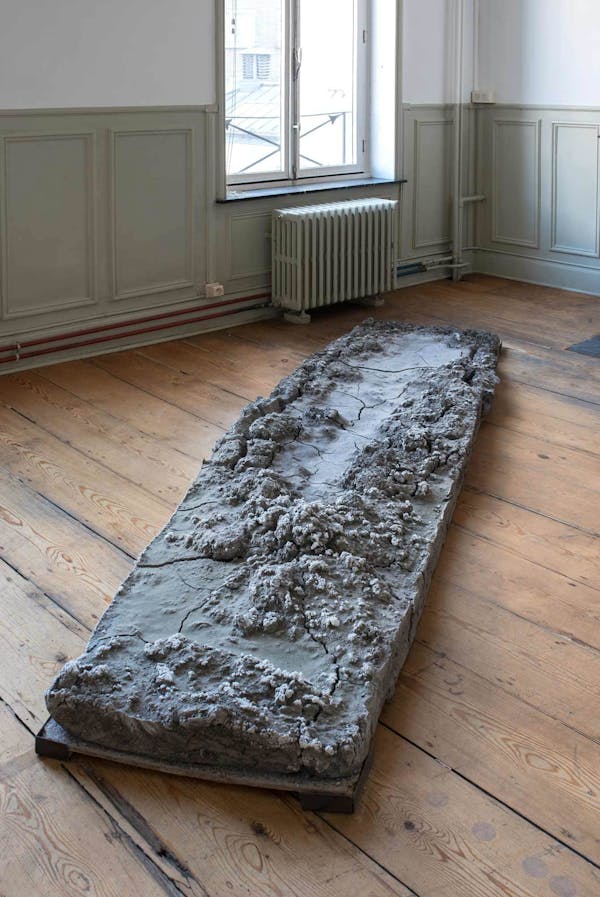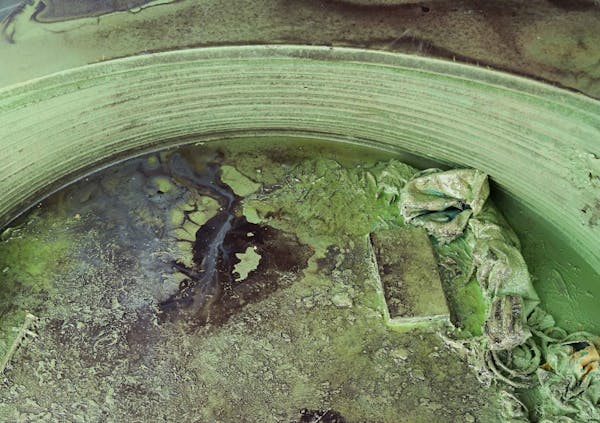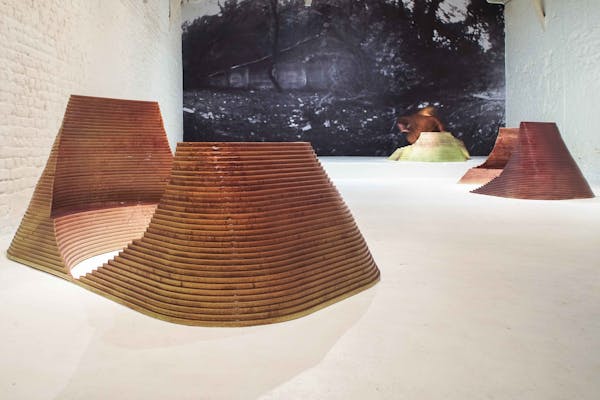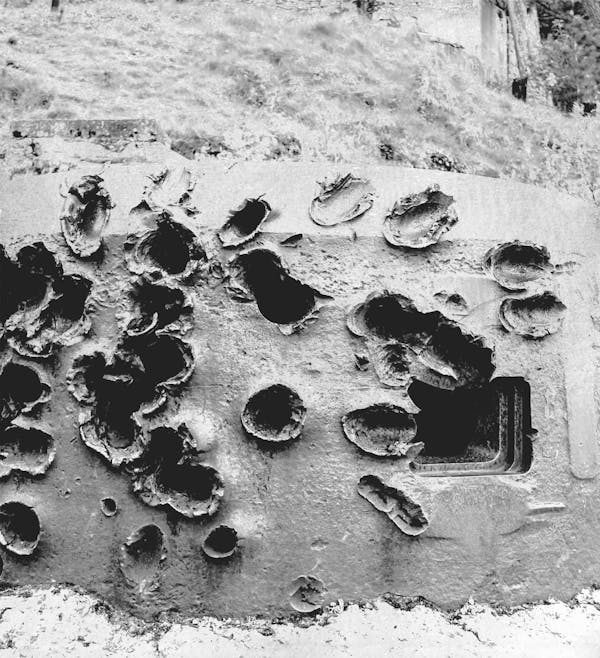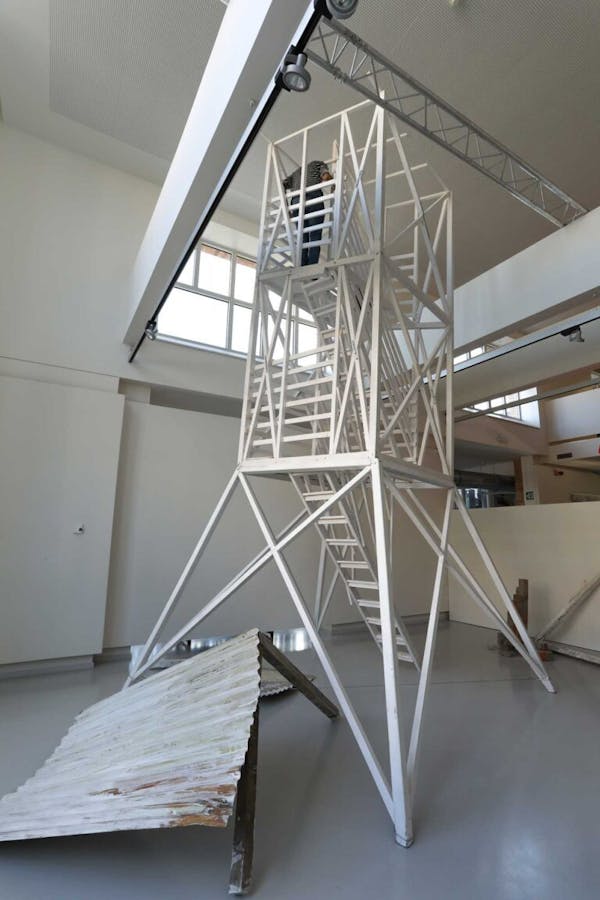Maëlle Dufour (°1994, BE) explores progress, the archaeology of waste and memory through complex systems and monumental installations.
A HISK resident, she studied sculpture at La Cambre and in Finland, and has taken part in several prestigious exhibitions both in Belgium and abroad, such as Artagon III, chaired by Hans Ulrich Obrist (Paris), BPS22 (BE), Triennale Beaufort (BE) and Universidad de Conception (CL). She has also been invited to Shake Résidence Nomade (Tunis, TU), Maac, Brussels (BE), Alumi Startwell, Amsterdam (NL). In 2022, she created an artistic integration for the Brussels Haren prison (BE).
Her work has been awarded several prizes, such as the Encouragement Prize for Sculpture of the Institut de France, the Sofam Prize 2019, the 2018 Prize of the Arts Commission of Wallonia, and the 2020 FWB Public Prize for Young Sculpture. She has benefited from several grants including “Vocatio 2022”, “Aide à la création 2019”, “Un Futur pour la Culture 2021” and the “Cocof 2021”.
Maëlle Dufour creates complex systems that question progress at the heart of past, known and future eras. She explores traces of decadence as much as first signs of hope, documenting the double-edge of progress and carrying awakeners of conscience who, through gestures of protection, reflect on the meaning of human evolution. She questions origin, memory and rebirth (or its absence): destroyed by nature itself or by the men who fought for its soils, are the ruins of these dehumanizing and dehumanized societies the foundations of a renewal?
The physical confrontation between her work and the viewer is destabilizing, and the size and weight of the pieces exceeding any human scale is constantly reminding us of the vulnerability of our own existence. Through system-sculptures, in perpetual transformation during the exhibition time, she explores “an archaeology of waste”, precious sources of information, prodigious physical legacies bequeathed to those who are still to be born.
By being embodied, her imagination also makes extensive use of the resources of material reverie that Bachelard theorized, and of a metaphorical palette of unusual richness. This feeds the paradoxical charm of her work, without ever losing its thread, bitterly touching upon the roughest of present history.
Yves Randaxhe (Curator of the Belgium National Bank’s collection)
Photo credits :
© Ithier Held, Isabelle Arthuis and Maëlle Dufour
